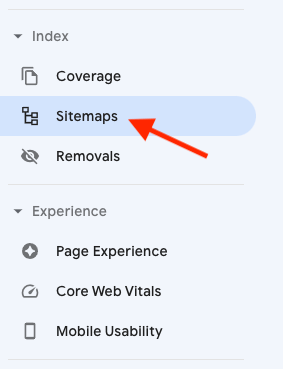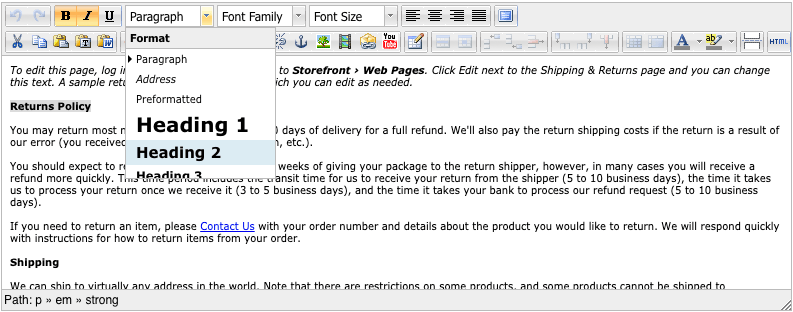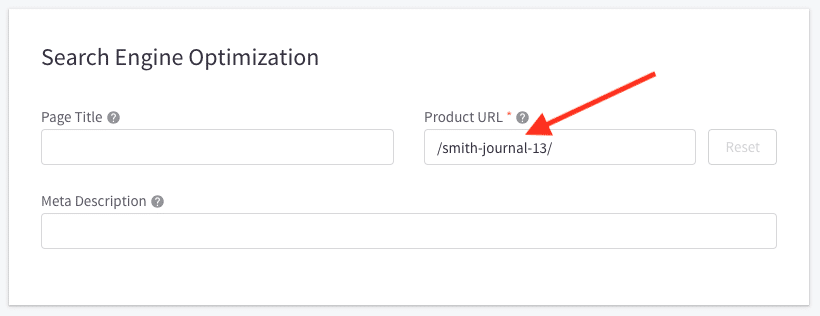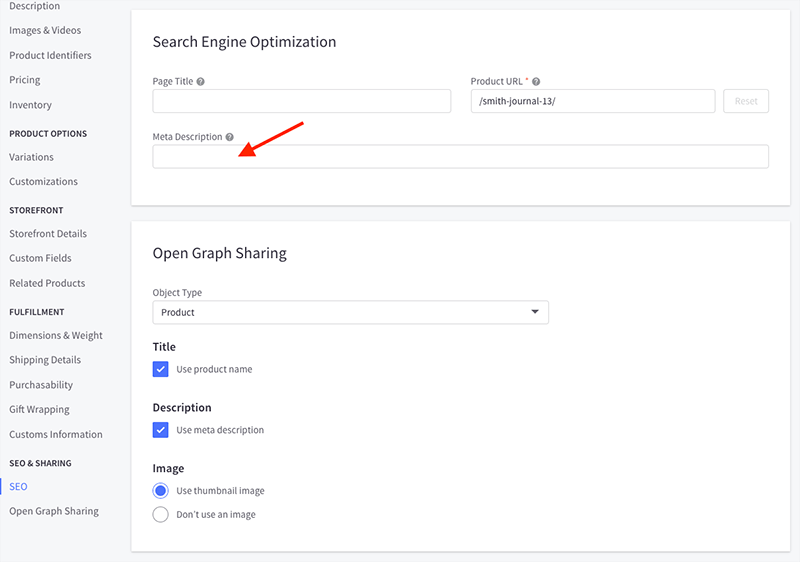Maximizing Your Online Presence: BigCommerce SEO Tips for Driving Traffic
Last Updated | March 28, 2024
Table of Contents
It’s one thing to build a beautiful and functional store with BigCommerce integration, and quite another to drive people to it by utilizing BigCommerce SEO.
BigCommerce has been a powerful eCommerce solution for many organizations, large and small, and the platform makes putting up a professional online store quite simple; for example, WooCommerce integration.
Headless BigCommerce Development is also an online shop builder for those who wish to create their own eCommerce site without bothering about coding and developing.
So, in this post, you’ll find a checklist containing 10 essential tactics of BigCommerce SEO that will help your store rank highly in organic search results.
Read this Headless BigCommerce Blog to take the first step toward becoming headless today.
How to Monitor and Analyze BigCommerce SEO Performance?
| Step | Description |
|---|---|
| 1. Set Up Google Analytics | Create a Google Analytics account and link it to your BigCommerce store for traffic insights. |
| 2. Use Google Search Console | Connect your store to Google Search Console to monitor Google’s crawling and indexing process. |
| 3. Track Key Metrics | Monitor organic traffic, keyword rankings, CTR, bounce rates, and conversion rates. |
| 4. Keyword Ranking | Regularly check keyword rankings with tools like Moz, SEMrush, or Ahrefs. |
| 5. Analyze Traffic Sources | Examine the sources of organic traffic and focus on optimizing key pages. |
| 6. Track CTR | Monitor click-through rates using Google Analytics and Google Search Console. |
| 7. Check for Technical Issues | Review Google Search Console for crawl errors, broken links, and duplicate content. |
| 8. Monitor Backlinks | Keep an eye on your backlink profile and address spammy or toxic links. |
| 9. Track On-Page Metrics | Assess on-page factors like page speed, mobile-friendliness, and schema markup. |
| 10. User Engagement Metrics | Examine metrics like bounce rate, time on page, and pages per session. |
| 11. Set Up Conversion Tracking | Define and track e-commerce goals in Google Analytics to measure revenue impact. |
| 12. Regular Reporting | Create regular SEO performance reports for tracking and sharing insights. |
| 13. A/B Testing | Conduct A/B tests to measure the impact of SEO changes on traffic and conversions. |
| 14. Competitor Analysis | Monitor competitors’ SEO performance and strategies using SEO tools. |
| 15. Stay Updated | Stay informed about SEO industry news and algorithm updates. |
This table provides a clear and organized overview of the steps involved in monitoring and analyzing BigCommerce SEO performance.
10 Essential Tactics You Need To Implement And Grow Your Online Store
On-Page SEO Quality
On-page SEO is a collection of procedures that are followed to ensure that a page has as many ‘ranking signals’ as feasible. Here are a few suggestions in this regard;
- Use clean URLS with targeted keywords
- Start product titles with primary keywords
- Intent primary keywords in H1 tags
- Proper use of headings
- Add LSI keywords in your content
- Intent primary keywords of your content in the beginning
- Addition of long-tail keywords in content
- Correct optimization images
- Use reasonably long blog posts
The Rich Snippets
Rich snippets -‘structured data’ that may be added to your content to aid both searchers and search engines in understanding what a page is about — are a significant aspect of how your website appears in search results.
These are visual cues regarding a page’s or post’s content displayed just after the header but before the meta description. These snippets are typically created by using ‘Schema Markup,’ an HTML code that includes Schema.org-defined tags.
BigCommerce Web Design Company generates automated rich snippets for items based on the data submitted on your product pages. Resultantly, it’s critical to fill out as much information as possible on the product detail pages. You can also generate your Schema code and add it to the HTML of the BigCommerce page, product, or post for some added Schema markup.
Alternatively, rich snippets can be added to your BigCommerce store by using a third-party app.
Images –Alt Text And Optimized File Names
When it comes to indexing your website, search engine algorithms take into account not only the words on your page, but also the visuals. It’s done by looking at two pieces of information linked with your photos: the ‘alt text’ and the file names. As a result, you must guarantee that both are up to par in terms of SEO.
-
The Alt Text For BigCommerce SEO
- There are three key reasons to use alt text in your images:
- It’s used by screen readers to give visually challenged viewers of your website a description of an image.
- It helps search engines categorize and comprehend your context.
- To avoid confusion, if your image fails to load, a description will be displayed.
You should aim to add alt text that works for both screen readers and search engines – a keyword-focused description understandable to everybody using a screen reader to access your content.
The process for adding alt text to images is slightly different for BigCommerce pages, posts and products. You can connect with BigCommerce Support Services to learn more about it.
-
The File Names For Bigcommerce SEO
BigCommerce SEO makes it difficult to change file names, thus it’s better to have your files names correct before uploading items to the platform such as Woocommerce development company and Salesforce Commerce Cloud. This implies making sure you emphasised keyword is in the file name and that it isn’t too long.
You can technically modify image file names for page and post images using the Image Manager supplied. This shows all photos that have been used in the BigCommerce pages or posts, and you can update the file names right there.
If you wish to modify the file name of a product image after you’ve uploaded it, you’ll need to delete the original image and re-upload a version with your focus keywords in the file name.
In a ‘time-constrained’ situation, changing the picture file names of items that are especially essential for a company and for which you want to see high search engine results could be a compromise.
Read This Guide Migrate From Shopify to BigCommerce To Migrate Your Store Data To A New Platform
Create Great Content And Build Backlinks
Many online store owners are so focused on their product catalogs — photographs, descriptions, keywords, and so on — that they overlook one of the most important aspects of SEO: writing amazing content.
Sites with in-depth, educational postings on topics in which people are really interested might rank highly in search results, especially if they have high-quality backlinks leading to them.
Typically, creating material that performs well in search entails
- keyword research
- crafting high-quality, long-form blog posts based on research
- obtaining backlinks to your blogs
Optimized Page Titles
The title of a web page is one of the most significant SEO aspects – search engines use it as a key piece of information when deciding how to identify and rank it, and your title appears as the biggest chunk of a search page.
You should never use ambiguous titles in your BigCommerce page or post titles. They should also include your ‘focus keyword,’ which is the phrase you want to rank for in search.
Registered Bigcommerce Store With Google Search Console And Bing Webmaster Tools
All site owners who already are enthusiastic about BigCommerce SEO should register their site with Google Search Console and Bing Webmaster Tools, regardless of the platform they used to build it.
By registering your website with these vital services, you are informing the two significant search engines that it exists and guaranteeing that it is crawled. Simply create a Google Search Console account, select ‘Add property,’ and follow the on-screen steps to add your BigCommerce store. Bing Webmaster Tools follows a similar procedure; you simply select the ‘Add a Site’ option.
This can be done in Search Console and Bing Webmaster Tools both by navigating to your site’s dashboard and selecting sitemaps.
Fast Loading Bigcommerce Store
Page speed is a major indicator that search engines employ to rank websites, with faster sites being given favor over slower ones.
BigCommerce’s options for decreasing page speed are quite limited: rather than purchasing your own hosting and coding your own template, you must use BigCommerce hosting and templates.
However, there are some measures you can do to speed up the loading of a BigCommerce site.
- Use photos that have been compressed.
- Minimize the use of external scripts and bespoke code on your website.
- Only use apps that you truly require.
- Use a limited number of web fonts on your website.
- Make your BigCommerce pages and posts AMP-ready.
Appropriate Use Of Headings
People who construct and update their own websites utilizing ‘DIY’ platforms like Headless BigCommerce development frequently make the error of ignoring headings. Instead of correctly applying headings H1, H2, H3, etc. to their text.
This leads to a slew of issues.
- It looks quite unappealing.
- It makes it more difficult to navigate your site.
- It makes it more difficult for search engines to properly understand and index your material.
So, before you start adding information to your BigCommerce store, make sure you understand headers and how to correctly apply them to your text.
Your H1 heading is the most significant of all the heading kinds since search engines utilize it, together with the page title, to rank a page. As a result, your primary keyword should always be included in your H1. Make sure your H1 doesn’t exactly match the title of your page. This may be interpreted by Google as over-optimization.
Clean URLs
Google encourages the use of ‘clean’ URLs. Clean URLs are short, clear, and easy to understand. Whatever you put in the fields above should;
- be reasonable in length
- include your target keyword (this will help both search engines content for BigCommerce SEO)
When numerous keywords are involved, use a hyphen to separate them; this allows Google to properly organize and index your content.
Engaging Meta Descriptions
Short summaries of web pages show beneath the clickable links on a search engine results page, and are called meta-descriptions. Although Google claims that meta-descriptions aren’t a ranking factor, a very well-written meta-description can inspire more visitors to your website, increasing the page’s CTR. Now that most SEO professionals believe that a page’s CTR is a ranking factor, having meta-descriptions correct is critical.
Your meta-description should:
- be concise
- be accurate
- contains your primary keyword
- contains an interesting content overview
Different steps are applicable depending on whether you wish to modify the description of a static page or the description of a product, just as they do with page titles.
What is BigCommerce: Reasons why it might be the best platform for your business
What is SEO and What SEO Fields Should Be Included in BigCommerce Platform
Search Engine Optimization is the scientific process of optimizing your website for targeted keywords in order to rank higher in search engines like Google.
SEO is a scientific art that encompasses more than just the technical parts; it also includes a unique user-experience and design component. But, using BigCommerce SEO for your site means achieving the best possible result for your goal phrase.
BigCommerce Development Company is SEO-friendly, giving you full control over all key BigCommerce SEO components like page titles, URLs, alt text, and meta-descriptions. Sites built with the platform load quickly, thanks to the platform’s use of CDN -content delivery network – and image optimization tools to improve search rankings.
Feature Product Reviews
Reviews are a great way to get new content added to your product pages regularly. Plus most reviews will naturally feature keywords that relate to the product, which helps you get some keyword love organically. Also, reviews are a proven way to increase shopper trust, and can improve your sales by 18%.
Avoid Keyword Cramming
Make sure the major keyword for your product is included in descriptor, but you also don’t want to force it in places where it doesn’t belong. Your content should not only be a vehicle for keywords; it should have a flow naturally. And a list of keywords at the bottom of the page is definitely not a good idea.
Competitor Research For Keywords
Competitor research entails looking at a higher-ranking website in order to come up with your own Keywords ideas. The procedure is straightforward: simply search a rival and examine all of their categories and product pages for your possible keywords. However, don’t just copy and paste their keywords. They may simply have a better DA than you.
Mention Breadcrumbs
This is a fantastic time to bring up breadcrumbs, an advanced navigation tool that helps Google scan and index your page. To check whether you’ve arranged breadcrumbs correctly, go to Google and type in your website’s URL. Simply enter all of your keywords into your breadcrumbs spreadsheet and move ahead.
Use Of Ahrefs
Ahrefs is a fantastic SEO tool in general. It may be used for keyword research, competitive analysis, backlink building, and much more.
The Organic Search page will show you a report of the top 5 organic keywords, as well as a list of all the keywords for which your site ranks. It makes BigCommerce SEO keyword research fast and easily.
The Content Gap Tool
This handy tool displays all of the keywords that your competitors rank for but you don’t. In the three leading fields, enter three competitors, and your website in the bottom field. When you select Show keywords, all of the available keywords will be displayed. All you will do is apply according to your needs, and you’ll obtain some fantastic keyword searches.
You might be interested in: POS Trends in Bigcommerce You Should Not Miss Out in 2022
What Other BigCommerce SEO Tips to Perform to Help Your Store Get Found Online
The following are some best SEO strategies that will help your BigCommerce store get found online;
- Conduct keyword research to determine the types of terms that clients are looking for.
- Based on your keyword analysis, create site architecture.
- On-page SEO via meta tags and content that are strategically optimized for keywords.
- Technical SEO to ensure that search engines can efficiently crawl your site.
- Use local SEO to boost organic traffic
- Use content marketing to attract more organic visits.
- Link building to increase your website’s authority.
- Use tools such As Google and Ahrefs to analyze SEO success.
- Salesforce Merchants can use Commerce Cloud’s site architecture and SEO capabilities to assist search engines scan and index their sites, resulting in a higher page rank.
Read How To Build A BigCommerce Wholesale Website to Get a Step-by-Step Checklist to Build an Online Store From Scratch.
Conclusion
There are just so many ways to attract traffic – social media, paid marketing, email, and search etc.
Only one of these methods that is consistent, free, and very simple to obtain is search traffic.
If you really want your site to receive hundreds of thousands of monthly visits, you must master BigCommerce SEO right now.
Hundreds of additional sales can be generated with a simple BigCommerce SEO campaign. It also doesn’t have to take years. Begin to position on the first page – and also in the top three results. It’s a no-brainer, really.
And if you’re feeling overwhelmed or don’t have time to keep up with all of this BigCommerce SEO, contact Folio3 to Hire Bigcommerce Developers . Our customer service team would be delighted to assist you!
FAQ’s
1. Question: Why is SEO important for BigCommerce stores?
Answer: SEO helps BigCommerce stores improve their visibility in search engine results, driving organic traffic and increasing the likelihood of attracting potential customers.
2. Question: What are some key SEO tips for optimizing a BigCommerce store?
Answer: Key SEO tips for BigCommerce stores include optimizing product pages with relevant keywords, creating unique and descriptive meta tags, improving site speed and mobile responsiveness, and earning quality backlinks.
3. Question: How long does it take to see results from SEO efforts on a BigCommerce store?
Answer: The timeline for seeing results from SEO efforts on a BigCommerce store can vary depending on factors like website authority, competition, and the effectiveness of optimization strategies. Generally, noticeable improvements may take several weeks to months.
4. Question: Can I optimize my BigCommerce store for local SEO?
Answer: Yes, you can optimize your BigCommerce store for local SEO by including location-based keywords in your content, creating a Google My Business listing, obtaining local citations, and encouraging customer reviews.
5. Question: How can I track the success of my SEO efforts on my BigCommerce store?
Answer: You can track the success of your SEO efforts on your BigCommerce store using tools like Google Analytics and Google Search Console to monitor website traffic, keyword rankings, click-through rates, and other key performance indicators.
















